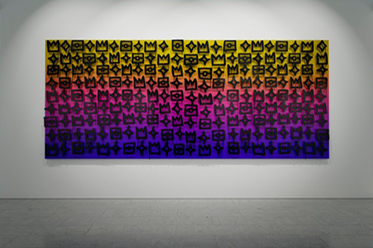 A new research report released by the Australia Council for the Arts examines the gap between public opinion and audience attendance for Aboriginal and Torres Strait Islander arts. Building Audiences explores the barriers to increased engagement with Aboriginal and Torres Strait Islander arts, and the ways the sector could be mobilising audiences, through a greater understanding of attitudes, beliefs and behaviours.
A new research report released by the Australia Council for the Arts examines the gap between public opinion and audience attendance for Aboriginal and Torres Strait Islander arts. Building Audiences explores the barriers to increased engagement with Aboriginal and Torres Strait Islander arts, and the ways the sector could be mobilising audiences, through a greater understanding of attitudes, beliefs and behaviours.
Australia Council Executive Director Aboriginal and Torres Strait Islander Arts, Lydia Miller said the Council’s 2014 report, The Arts in Daily Life: Australian Participation in the Arts found 92 per cent of participants thought Indigenous arts were an important part of Australia’s culture, but only a quarter had engaged with it over the previous year.
“The interest is obviously there but it isn’t translating into action,” said Ms Miller. “We wanted to find out what was stopping Australians experiencing Indigenous arts and how we might better realise the cultural ambitions Australians clearly have.”
Ms Miller said the Building Audiences report was a key part of the Australia Council’s commitment to a stronger evidence base for Australian arts, to be used as a resource by the arts sector, and a catalyst for an informed national conversation about engagement with Indigenous arts and culture.
“Building Audiences supports much of what we intuitively know, but it is important to have this evidence base to inform future support and planning. We want more Australians to be able to experience our strong and vibrant sector, and to see the incredible depth and variety of work being produced,” added Ms Miller.
Key barriers facing audiences include uncertainty about how to behave at cultural events and fear of offending; lack of awareness from audiences not actively seeking information about Indigenous arts; and outdated perceptions that Indigenous arts are only ‘serious or educational’.
The research also considered several strategies to build audiences for Indigenous arts, including:
- strengthening skills development, advice and resourcing to Indigenous arts practitioners;
- increasing Indigenous artists in the main programs of arts companies by including more Indigenous people in decision-making roles;
- promoting collaborations between Indigenous and non-Indigenous arts companies to present their work to wider audiences;
- introducing children and young people to Indigenous arts through school and extracurricular activities; and
- creating more accessible experiences for diverse audiences.
Commissioned by the Australia Council with Deakin University and the Melbourne Business School, University of Melbourne, the researchers examined existing data, conducted interviews with key industry members, current and potential audiences of Indigenous arts and representatives from arts institutions.
Preserving, celebrating and supporting Aboriginal and Torres Strait Islander Arts is a key goal in the Australia Council’s Strategic Plan. The findings of this report present a significant opportunity to increase awareness across the national arts sector and the Aboriginal and Torres Strait Islander arts community, and to inform the audience development strategies of arts organisations.
For more information and to read the summary report, visit: Building Audiences: Aboriginal and Torres Strait Islander Arts for details.
Image: Reko Rennie, Regalia 2015 aluminium, steel, synthetic polymers 240 x 560 cm – courtesy the artist and Blackartprojects
